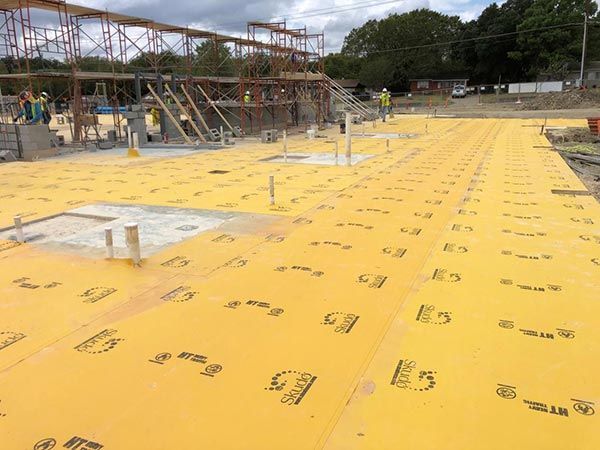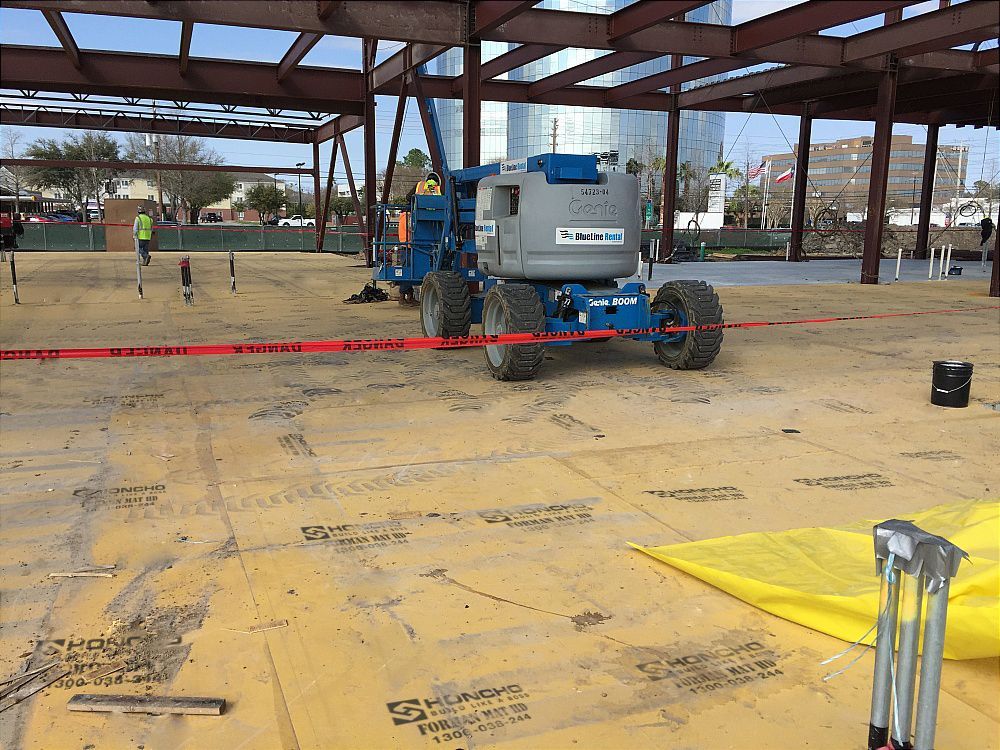CONCRETE PROTECTION GUIDE #1: SLAB THICKNESS, CONCRETE FINISHES, AND DURATION OF PROTECTION
One of the most frequent questions we get at Honcho is, “what’s the best way to protect concrete during construction?” Concrete is expensive and unfortunately, relatively easy to damage (stain, scratch or other) and therefore something builders are keen to protect.
Before we get to the solution though, it’s imperative builders consider the concrete installation process, because when it comes to protection, one size – or rather one solution – doesn’t necessarily fit them all.
Therefore, we thought it might be helpful to put together a guide of general concreting tips that addresses some of the key considerations builders should be across when thinking about how best to protect concrete throughout construction. Let’s start with:
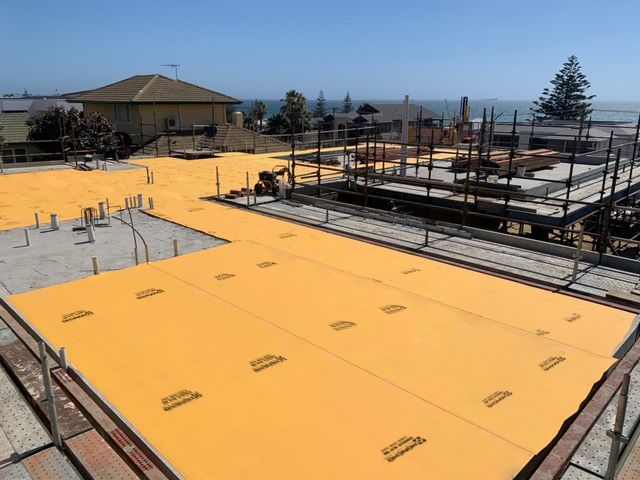
Concrete slab thickness
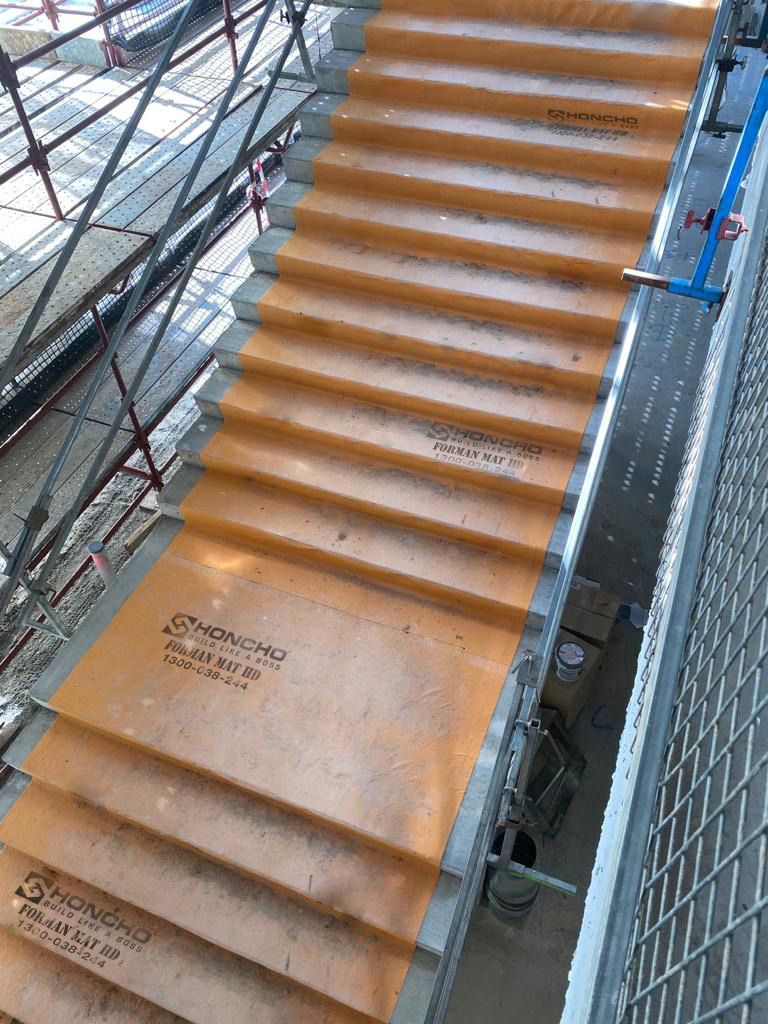
Concrete finishes
The type of finish that can be applied to a concrete slab is critical when considering protection and timing of application.
There are many different concrete finishes that are used on both commercial and residential sites. These include polished, trowelled, burnished, broom, exposed aggregate, stamped concrete, cove, and more.
Why the finish of a slab is so important is because some concrete finishes are more forgiving of imperfections, while others – such as burnished – are not. For example, cove-based or broom finished slabs are less likely to display imperfections than more refined finishes. This is due to the undulation of these surfaces, making it more difficult to notice imperfections in the slab.
Conversely, with a polished or steel trowel finished slab - the surface is smooth and flat. Meaning any reflection or light coming off the slab will be more noticeable to the naked eye. Which also means imperfections will be more obvious, too.

Therefore, the more polished a slab, the more noticeable issues like marks, streaks, cure lines and tiger stripes will be. And going down with protection too soon could mean capturing moisture and other contaminants expelling from the slab. Thereby creating imperfections on the slabs surface.
By waiting longer to protect (particularly with more refined concrete finishes) and giving the slab adequate curing time, you reduce the chance of trapping moisture & contaminants onto the slab’s surface. Essentially, the more polished or high-end the finish, the more time between pour and protection.
It’s best to consult with an expert on timing, however, standard waiting time is generally somewhere between 14 to 28 days from pour to protection. Obviously, this timing will be impacted by several different variables, of which we have attempted to cover in this document.
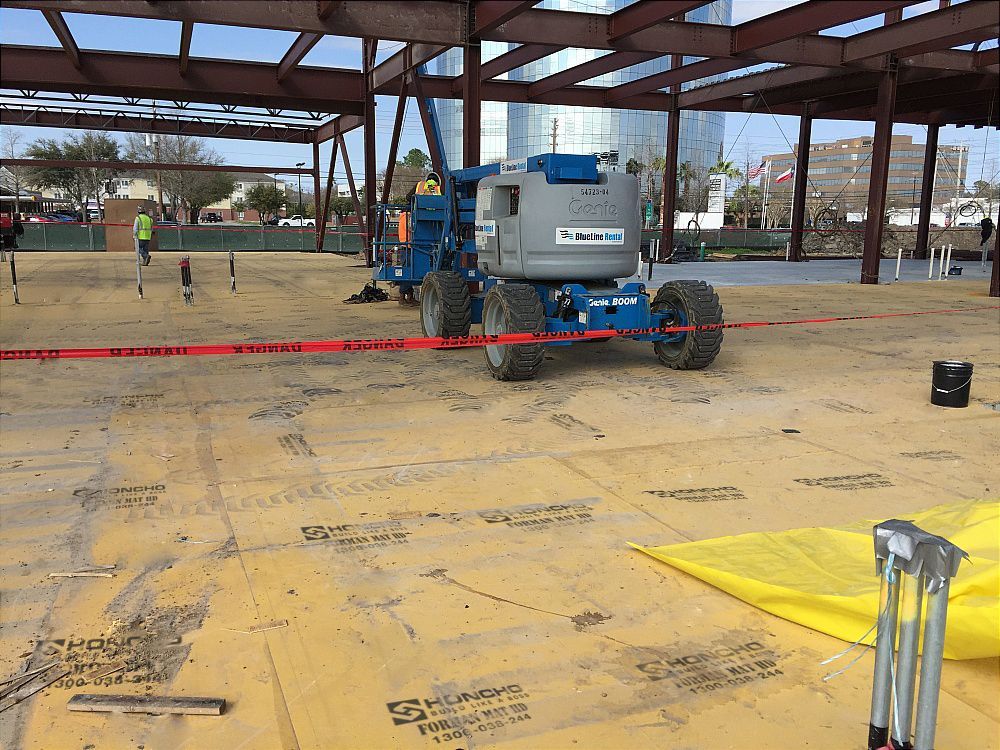
Duration of protection


Summary
We hope that after reading this concrete protection guide you will have a better understanding of the key considerations impacting concrete slab thickness. If you’d like to learn more or would like to get a tailored concrete protection solution for your job-site, get in touch with us at info@honchosupplies.com.au or 1300 038 244 and Build like a Boss!
Be sure to take a look at our other concrete protection guides for further concreting tips:
Slab pouring location and other environmental factors to consider.
FIND OUT MORE >How soon to protect your concrete after pouring, and the use of curing agents and desenifiers.
FIND OUT MORE >Build Like a Boss With Honcho’s Concrete Protection Solutions
Please make sure to speak with your Honcho representative prior to product selection, as some substrates, such as, but not limited to concrete, terrazzo, and stone, may not be suitable in certain circumstances.
CONTACT US
Phone: 1300 038 244
Email: info@honchosupplies.com.au
Contact Us
We will get back to you as soon as possible.
Please try again later.

